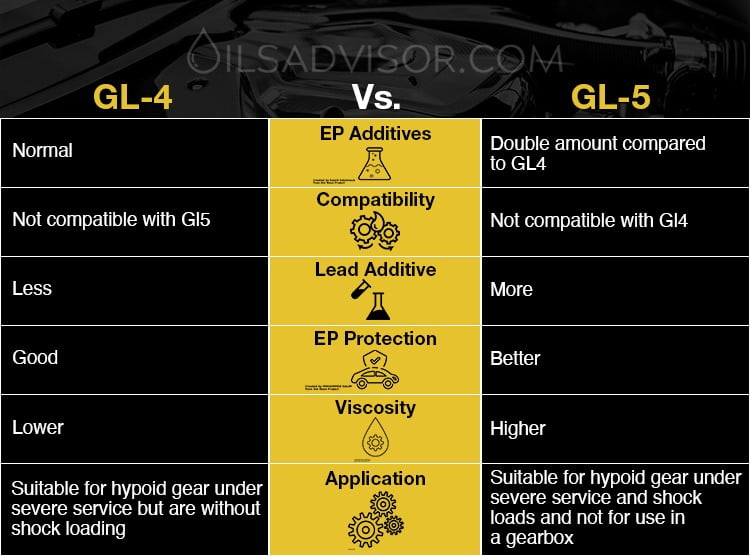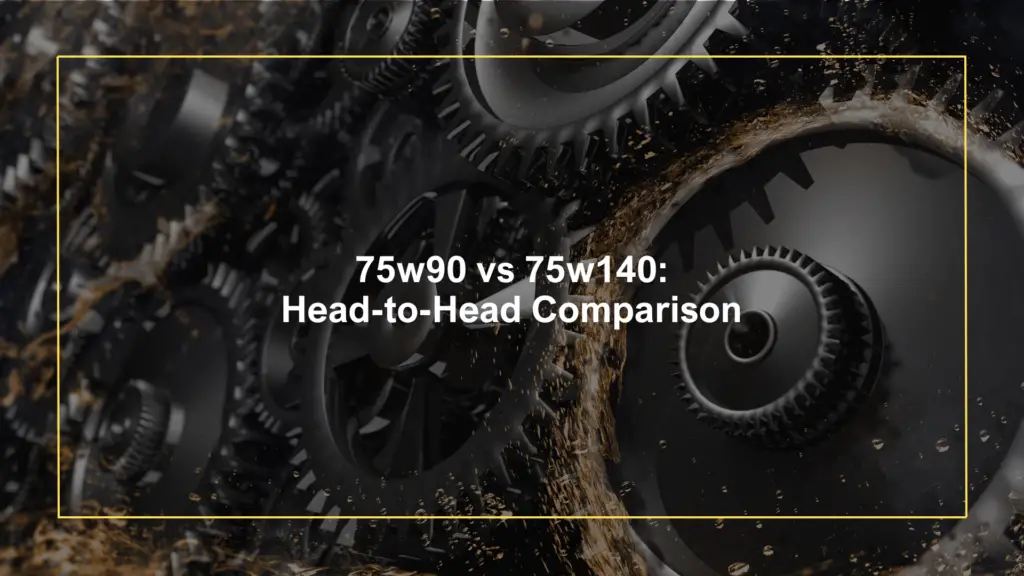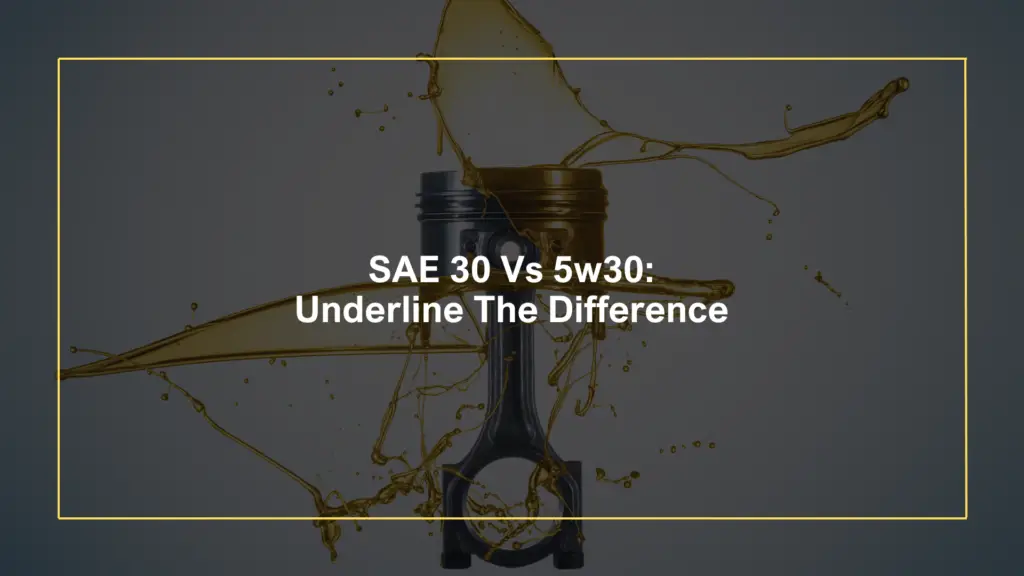Choosing gear oil for your vehicle can be quite a challenging experience. Especially when you come across terms like GL4 and GL5, you do not have the slightest clue which is the best.
In general, GL4 and GL5 have different additives and are used in disparate applications. For instance, GL5 gear oil contains more EP additives than GL4 oil.
But that’s not all!
This article provides you with a detailed comparison between GL4 and GL5. Moreover, you will be in a position to quickly determine which of the two is suitable for your vehicle.
Let’s get started!
GL4 Vs GL5: Key Differences

EP Additives
The amount of EP (Extreme Pressure) protection additives is the major difference between GL4 and GL5 gear oils.
The key elements of the EP additives are Sulphur and Phosphorous. Unfortunately, active Sulphur reacts with some metals causing corrosion. To counter this, de-activated Sulphur is used.
When combined with Phosphorus, the two form a layer of protection inside the gear parts and help to prevent corrosion under extreme pressure. In high temperatures, EP additives form a surface film that prevents welding of the surfaces, thus baring the occurrence of micro-welds that are destructive under high loads.
According to API, GL5 gear oil contains higher levels of EP additives. On the other hand, GL4 products contain up to 50% fewer additives, hence it offers less protection against pressure compared to GL5. However, this doesn’t mean that GL4 is weak. It can maintain enough protection to your gear in normal driving condition. GL5 will provide better protection in extreme conditions: loads, speed, or torques.
Related: 75w90 vs 75w140: Head-to-Head Comparison
Lead Additive
There is a considerable amount of lead additives in both GL4 and GL5 gear oils. The main purpose of the additive is to reduce wear in the gear parts.
The use of lead additives is highly discouraged because of the negative impact on the environment. However, combining it with Sulphur and Phosphorous significantly reduces the bad effects.
GL5 has higher amounts of lead additives compared to GL4.
Protection
Both GL4 and GL5 offer protection to the gears, albeit at different levels. While GL5 has higher amounts of almost all additives; it is important to understand each additive’s role and its downside.
Because of the reduced EP additives, GL4 poses lower risks of corrosion. As a result, applications using it tend to last longer than those using GL5 oils.
As I said earlier, GL5, on the other hand, will provide extra protection for vehicles under severe conditions. This is the reason why GL5 is recommended in high-pressure circumstances: front axle or rear axle differential.
Application
The application of GL4 and GL5 gear oil is determined by the levels of pressure around the frequent operating environment.
As aforementioned, GL5 has high EP additives making it ideal for hypoid gears and axles. Other factors that come into play include speed, load and torque conditions. The gear may experience low speed and high torque or vice versa, which creates high pressure. Using GL5 becomes necessary as it will offer protection against extreme pressure.
GL4, on the other hand, works well when the pressure is moderate to extreme. However, due to the low levels of EP additives, there is less protection when the pressure is extreme. This makes it ideal for transaxle applications and manual transmissions.
Compatibility/ Interchangeable
Both GL4 and GL5 oils have similar components. The only difference is the amount of Sulphur and Phosphorus levels, where GL5 has twice the amount found in GL4. Therefore, they are compatible and can be used interchangeably.
However, it is best to use the one that has been recommended for your vehicle. That way, you will get maximum protection and prevent damages that would occur due to the additional component.
You are also likely to encounter problems if the additives are less than the ideal amount.
On the other hand, GL5 is known to offer better protection under extreme pressure.
Therefore, both oils will offer the desired protection if used within the recommended environment.
Viscosity
GL4 has lower viscosity compared to GL5. This is mainly as a result of the levels of additives. When there are more additives, the viscosity increases, and the opposite is also true.
Related: 5w40 Vs 15w40: Detailed Comparison
FAQs
1. Can You Mix GL4 And GL5?
Yes. You can mix GL4 and GL5.
But, you should only do this if you do not have any option. Mixing the two can only be used as a short-term measure as the long-term effects could be fatal.
If your gear requires GL4, you may experience some levels of corrosion to the gear parts because of the high levels of additives found in GL5.
Also, the reduced additives in GL4 mean that you will have a lower level of protection for applications that require GL5.
Therefore, should you mix the two as an emergency measure, ensure that you get the right oil as soon as possible to prevent damages that could end up being costly.
2. Can You Use Gl5 Gear Oil Instead of Gl4?
Yes you can. But I recommend that you SHOULD NOT. If your manufacturer recommends GL4, it is prudent that you stick to it.
GL5 has very high levels of EP additives for protection when under pressure. In most cases, your gear operates under normal speeds and loads with minimal instances where you will encounter extreme pressure. During such circumstances, GL4 oils will still offer the needed protection.
Using GL5 oil instead of GL4 can damage your gear parts because of the high levels of sulfur and phosphorous that reacts against the yellow metals, causing corrosion. This greatly reduces your gear’s life and performance.
Final Words
Having looked at the above differences, it is clear that both oils are formulated to meet specific needs on their applications.
Of course, GL4 has a wider range of applications. Unlike its counterpart, it does not expose the gear parts to unwanted chemical reactions and guarantees you a longer lifespan for your gear. However, for applications working under immense pressure, GL5 is your best choice.
Ultimately, the choice of whether to use GL4 or GL5 lies with your car manufacturer. Always use the oil recommended for your applications as indicated in the manual. You can also get more information from specific websites to ensure that you do not go against any terms and conditions.
Related Reads
- 75w90 vs 75w140: Head-to-Head Comparison Explore how the viscosity of 75w90 and 75w140 oils affects their compatibility with GL4 and GL5 gear oils – Learn more.
- Unparalleled Penetrating Oils for Rusted Nuts and Bolts Discover how GL4 and GL5 gear oils compare in terms of protection and performance in high-stress environments – Read more.
- Understanding ILSAC GF-6: The Best Engine Oils for Modern Vehicles Understand how GL4 and GL5 gear oils meet different performance standards and specifications – Find out more.
- Reducing Oil Consumption for Catalytic Converter Efficiency Learn how using the right gear oil, whether GL4 or GL5, can impact overall vehicle efficiency and reduce wear – Explore here.
- Liqui Moly vs. Mobil 1 – Which is the Better Option? See how Liqui Moly and Mobil 1 gear oils compare in GL4 and GL5 specifications for optimal gear protection – Discover now.


